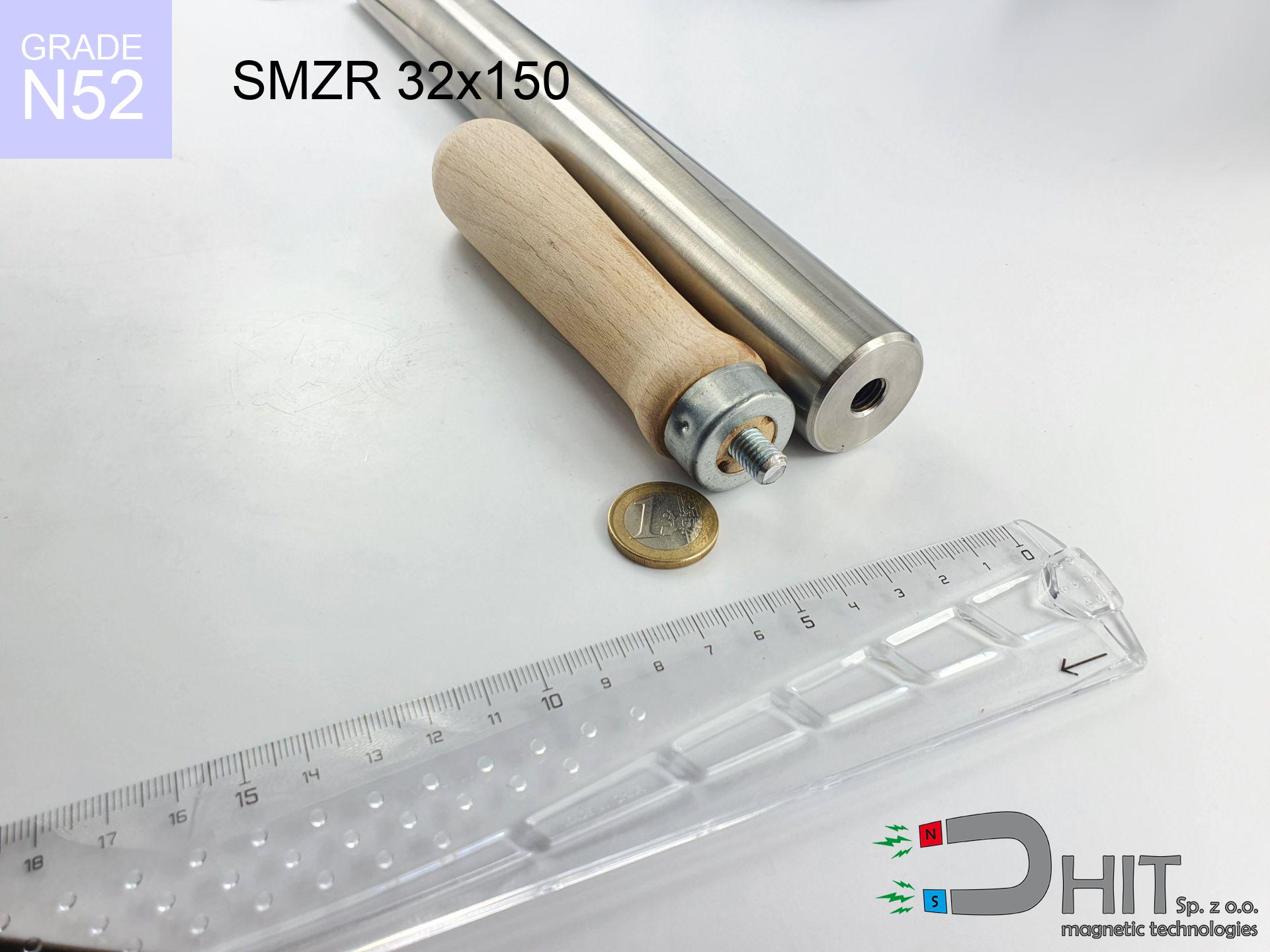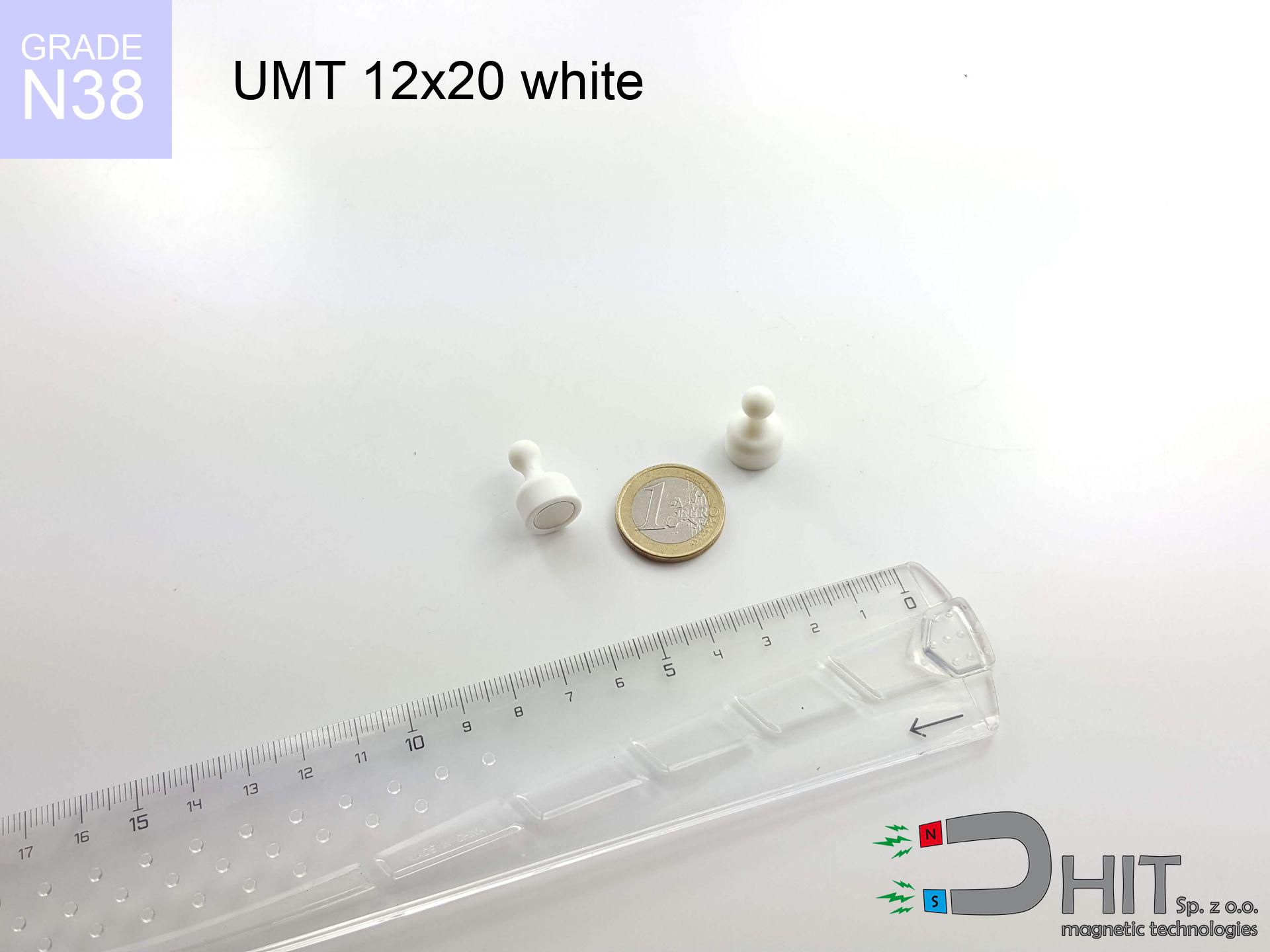SM 25x375 [2xM8] / N52 - magnetic separator
magnetic separator
Catalog no 130363
GTIN/EAN: 5906301813118
Diameter Ø
25 mm [±1 mm]
Height
375 mm [±1 mm]
Weight
1460 g
Magnetic Flux
~ 9 500 Gauss [±5%]
1131.60 ZŁ with VAT / pcs + price for transport
920.00 ZŁ net + 23% VAT / pcs
bulk discounts:
Need more?
Call us now
+48 888 99 98 98
if you prefer contact us via
contact form
through our site.
Lifting power and form of magnetic components can be calculated on our
magnetic mass calculator.
Orders placed before 14:00 will be shipped the same business day.
Physical properties - SM 25x375 [2xM8] / N52 - magnetic separator
Specification / characteristics - SM 25x375 [2xM8] / N52 - magnetic separator
| properties | values |
|---|---|
| Cat. no. | 130363 |
| GTIN/EAN | 5906301813118 |
| Production/Distribution | Dhit sp. z o.o. |
| Country of origin | Poland / China / Germany |
| Customs code | 85059029 |
| Diameter Ø | 25 mm [±1 mm] |
| Height | 375 mm [±1 mm] |
| Weight | 1460 g |
| Material Type | Stainless steel AISI 304 / A2 |
| Magnetic Flux | ~ 9 500 Gauss [±5%] |
| Size/Mount Quantity | 2xM8 |
| Polarity | circumferential - 14 poles |
| Casing Tube Thickness | 1 mm |
| Manufacturing Tolerance | ±1 mm |
Magnetic properties of material N52
| properties | values | units |
|---|---|---|
| remenance Br [min. - max.] ? | 14.2-14.7 | kGs |
| remenance Br [min. - max.] ? | 1420-1470 | mT |
| coercivity bHc ? | 10.8-12.5 | kOe |
| coercivity bHc ? | 860-995 | kA/m |
| actual internal force iHc | ≥ 12 | kOe |
| actual internal force iHc | ≥ 955 | kA/m |
| energy density [min. - max.] ? | 48-53 | BH max MGOe |
| energy density [min. - max.] ? | 380-422 | BH max KJ/m |
| max. temperature ? | ≤ 80 | °C |
Physical properties of sintered neodymium magnets Nd2Fe14B at 20°C
| properties | values | units |
|---|---|---|
| Vickers hardness | ≥550 | Hv |
| Density | ≥7.4 | g/cm3 |
| Curie Temperature TC | 312 - 380 | °C |
| Curie Temperature TF | 593 - 716 | °F |
| Specific resistance | 150 | μΩ⋅cm |
| Bending strength | 250 | MPa |
| Compressive strength | 1000~1100 | MPa |
| Thermal expansion parallel (∥) to orientation (M) | (3-4) x 10-6 | °C-1 |
| Thermal expansion perpendicular (⊥) to orientation (M) | -(1-3) x 10-6 | °C-1 |
| Young's modulus | 1.7 x 104 | kg/mm² |
Table 1: Rod construction
SM 25x375 [2xM8] / N52
| Parameter | Value | Description / Unit |
|---|---|---|
| Diameter (Ø) | 25 | mm |
| Total length | 375 | mm (L) |
| Active length | 339 | mm |
| Section count | 14 | modules |
| Dead zone | 36 | mm (2x 18mm starter) |
| Weight (est.) | ~1399 | g |
| Active area | 266 | cm² (Area) |
| Housing material | AISI 304 | 1.4301 (Inox) |
| Surface finish | Ra < 0.8 µm | Polished |
| Temp. class | 80°C | Standard (N) |
| Force loss (at max °C) | -12.8% | Reversible loss (physics) |
| Force (calculated) | 22.6 | kg (theor.) |
| Induction (surface) | ~9 500 | Gauss (Max) |
Chart 2: Field profile (14 sections)
Chart 3: Temperature performance
Chemical composition
| iron (Fe) | 64% – 68% |
| neodymium (Nd) | 29% – 32% |
| boron (B) | 1.1% – 1.2% |
| dysprosium (Dy) | 0.5% – 2.0% |
| coating (Ni-Cu-Ni) | < 0.05% |
Sustainability
| recyclability (EoL) | 100% |
| recycled raw materials | ~10% (pre-cons) |
| carbon footprint | low / zredukowany |
| waste code (EWC) | 16 02 16 |
Other products
Pros and cons of rare earth magnets.
Strengths
- They do not lose strength, even after approximately ten years – the decrease in lifting capacity is only ~1% (based on measurements),
- They are noted for resistance to demagnetization induced by external disturbances,
- A magnet with a smooth silver surface has an effective appearance,
- Neodymium magnets generate maximum magnetic induction on a contact point, which increases force concentration,
- Due to their durability and thermal resistance, neodymium magnets are capable of operate (depending on the form) even at high temperatures reaching 230°C or more...
- Possibility of precise shaping as well as optimizing to concrete requirements,
- Huge importance in advanced technology sectors – they serve a role in hard drives, electric drive systems, medical devices, and complex engineering applications.
- Compactness – despite small sizes they offer powerful magnetic field, making them ideal for precision applications
Cons
- To avoid cracks upon strong impacts, we recommend using special steel holders. Such a solution secures the magnet and simultaneously improves its durability.
- Neodymium magnets decrease their strength under the influence of heating. As soon as 80°C is exceeded, many of them start losing their power. Therefore, we recommend our special magnets marked [AH], which maintain durability even at temperatures up to 230°C
- Due to the susceptibility of magnets to corrosion in a humid environment, we advise using waterproof magnets made of rubber, plastic or other material resistant to moisture, in case of application outdoors
- We recommend casing - magnetic mount, due to difficulties in realizing threads inside the magnet and complex shapes.
- Health risk to health – tiny shards of magnets can be dangerous, if swallowed, which gains importance in the context of child safety. Furthermore, small components of these devices can disrupt the diagnostic process medical after entering the body.
- High unit price – neodymium magnets have a higher price than other types of magnets (e.g. ferrite), which can limit application in large quantities
Holding force characteristics
Magnetic strength at its maximum – what affects it?
- with the application of a sheet made of special test steel, ensuring maximum field concentration
- with a cross-section minimum 10 mm
- characterized by even structure
- with zero gap (no paint)
- during detachment in a direction perpendicular to the mounting surface
- at temperature approx. 20 degrees Celsius
Magnet lifting force in use – key factors
- Distance – existence of foreign body (rust, tape, gap) interrupts the magnetic circuit, which reduces capacity steeply (even by 50% at 0.5 mm).
- Pull-off angle – note that the magnet has greatest strength perpendicularly. Under shear forces, the holding force drops drastically, often to levels of 20-30% of the maximum value.
- Metal thickness – the thinner the sheet, the weaker the hold. Part of the magnetic field passes through the material instead of generating force.
- Steel type – mild steel attracts best. Alloy steels decrease magnetic properties and lifting capacity.
- Plate texture – ground elements guarantee perfect abutment, which improves field saturation. Uneven metal reduce efficiency.
- Operating temperature – neodymium magnets have a sensitivity to temperature. At higher temperatures they are weaker, and in frost they can be stronger (up to a certain limit).
Holding force was tested on a smooth steel plate of 20 mm thickness, when a perpendicular force was applied, whereas under attempts to slide the magnet the load capacity is reduced by as much as 75%. In addition, even a small distance between the magnet and the plate lowers the load capacity.
Precautions when working with neodymium magnets
Magnet fragility
NdFeB magnets are ceramic materials, which means they are prone to chipping. Clashing of two magnets leads to them shattering into small pieces.
Hand protection
Pinching hazard: The attraction force is so immense that it can result in blood blisters, pinching, and broken bones. Use thick gloves.
Operating temperature
Monitor thermal conditions. Heating the magnet to high heat will permanently weaken its magnetic structure and pulling force.
Product not for children
Product intended for adults. Tiny parts can be swallowed, causing intestinal necrosis. Store out of reach of kids and pets.
Medical implants
For implant holders: Powerful magnets disrupt medical devices. Maintain minimum 30 cm distance or ask another person to handle the magnets.
Avoid contact if allergic
Certain individuals suffer from a contact allergy to nickel, which is the standard coating for NdFeB magnets. Frequent touching may cause a rash. We recommend use protective gloves.
Threat to electronics
Device Safety: Strong magnets can damage payment cards and delicate electronics (pacemakers, medical aids, timepieces).
GPS Danger
GPS units and smartphones are highly susceptible to magnetic fields. Close proximity with a powerful NdFeB magnet can permanently damage the internal compass in your phone.
Powerful field
Exercise caution. Rare earth magnets act from a distance and snap with massive power, often faster than you can react.
Flammability
Fire hazard: Neodymium dust is highly flammable. Avoid machining magnets in home conditions as this may cause fire.

![Separation magnetic rod SM 25x375 [2xM8] / N52 Separation magnetic rod SM 25x375 [2xM8] / N52](https://cdn3.dhit.pl/graphics/banners/magnet.webp)
![SM 25x375 [2xM8] / N52 - magnetic separator](https://cdn3.dhit.pl/graphics/products/sm-25x375-2xm8-soh.jpg)



![UMH 16x5x32 [M4] / N38 - magnetic holder with hook UMH 16x5x32 [M4] / N38 - magnetic holder with hook](https://cdn3.dhit.pl/graphics/products/umh-16x5x32-m4-lak.jpg)

